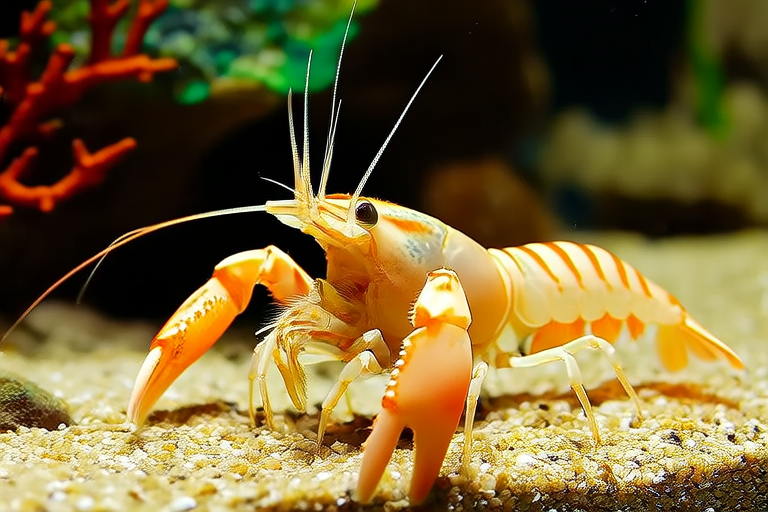Coral Shrimp Care Guide
Welcome to your comprehensive guide on caring for coral shrimp! These vibrant creatures are a popular addition to many aquariums due to their striking appearance and relatively low-maintenance care requirements. This guide will cover everything from setting up their ideal habitat to ensuring they remain healthy and thriving.
Setting Up the Ideal Habitat
The first step in providing optimal care for your coral shrimp is creating an environment that mimics their natural habitat. Coral shrimp prefer environments rich in hiding spots, which can be achieved by adding live rock, caves, and driftwood to your aquarium. These elements not only offer shelter but also encourage beneficial bacteria growth, contributing to a healthier ecosystem.
It’s important to maintain stable water conditions. Coral shrimp thrive in temperatures between 72-78°F (22-26°C) with a pH level of 8.1-8.4. Ensure the water hardness stays within 8-12 dKH. Regular monitoring of these parameters is crucial for preventing stress-related illnesses. A good quality filter and regular water changes—about 10% weekly—are necessary to keep the water clean and free from harmful toxins.
Dietary Needs
Coral shrimp are omnivorous, feeding on algae, detritus, and small particles of food. In the wild, they play an essential role in maintaining reef health by cleaning up waste products. To support this function in captivity, provide them with a varied diet consisting of high-quality flake foods, sinking pellets, and occasional treats like blanched vegetables or frozen foods such as brine shrimp or bloodworms.
Avoid overfeeding, as excess food can lead to poor water quality and stress. Feed them small portions daily rather than large meals less frequently. This approach ensures they receive adequate nutrition without compromising tank cleanliness.
Tank Mates Compatibility
Selecting compatible tank mates is vital when housing coral shrimp. They generally get along well with other peaceful species such as clownfish, damselfish, and small wrasses. However, caution must be exercised when introducing larger or more aggressive fish, as they may view the shrimp as prey.
Ensure there is sufficient space for all inhabitants to coexist harmoniously. Overcrowding can cause undue stress and competition for resources, potentially leading to territorial disputes or bullying behaviors.
Understanding Behavioral Patterns
Observing your coral shrimp’s behavior provides valuable insight into their well-being. Healthy shrimp are active during daylight hours, scavenging for food and exploring their surroundings. Conversely, lethargic or reclusive behavior might indicate underlying health issues requiring attention.
Pay special attention to any signs of aggression among shrimp. While occasional skirmishes are normal, persistent fighting could disrupt the social structure and lead to injuries. If necessary, separate combatants to prevent further conflict.
Common Health Issues
Despite being hardy creatures, coral shrimp can still encounter various health problems. One common issue is white spot disease, characterized by tiny white spots appearing on the body. Immediate quarantine and treatment with appropriate medications are recommended if symptoms arise.
Another potential concern is molting disorders, where shrimp struggle to shed their exoskeleton properly. Providing calcium-rich supplements and ensuring proper nutrition can help mitigate this risk. Additionally, maintaining pristine water conditions supports overall health and resilience against diseases.
Maintenance Routines
Establishing consistent maintenance routines ensures long-term success in keeping coral shrimp healthy. Perform weekly partial water changes of about 10% to remove accumulated toxins and replenish essential minerals. Clean filters regularly to prevent clogging and maintain efficient filtration.
Inspect your shrimp periodically for any visible signs of injury or illness. Early detection allows prompt intervention, minimizing recovery time and preventing complications. Regularly check water parameters using reliable test kits to identify potential imbalances before they affect your pets.
Conclusion
By following this comprehensive guide, you’ll be well-equipped to provide excellent care for your coral shrimp. Remember, each shrimp has unique needs and preferences, so continuous observation and adaptation are key to maintaining their happiness and vitality. With proper attention and dedication, you’ll enjoy watching these fascinating creatures thrive in your aquatic sanctuary.
